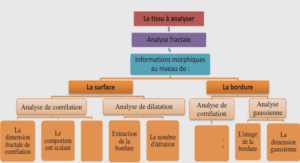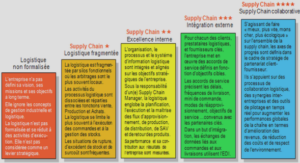Technological advances in recent years in the field of computer science for both hardware and software have contributed to the use of numerical simulations for the prediction of fluid flow. Numerical simulations can be combined with experimental methods to considerably reduce the time and cost of benchmark creation and the development and improvement costs of products. These benefits of numerical simulation software and new computer technologies on experimental methods have contributed to the development of new robust numerical methods in the field of “computational fluid dynamics” (CFD). Numerical simulations often provide accurate results more quickly and cheaply than experimental studies. The simulation of multiphase flows, which is a constituent of CFD, takes advantage of the computer technology benefits of both software and hardware by developing new numerical approaches to analyse these complex flows.
In physics and chemistry, the phase concept is used to specify the diverse states of a system. The phase concept or notion is also known by the term “state of matter”. There are three states of matter: gas, liquid and solid. A system consists of a single phase if it is entirely homogeneous, both physically and chemically. Otherwise, each of the various homogeneous parts that may be continuous or dispersed within each other can be called a phase. A multiphase flow is the simultaneous flow of several phases. The two-phase flow is a special case of a multiphase flow where there are only two phases. Two-phase models can be classified according to the natures of the phases in the flow:
• gas-solid flow;
• liquid-solid flow;
• liquid-liquid flow (immiscible liquids); and
• gas-liquid flow.
Multiphase flows are present all around us, and there are many examples that we can find both in nature and in technical and industrial processes. For instance, for the flow of gas and liquid mixtures, we have studies of clouds, raindrops, liquid aerosol injection, inkjet printing, the free surface flow of a liquid (river or sea), moulding, liquid sloshing in a tank, air and water mixing through porous soil in geothermal wells, gas and oil mixtures in petroleum extraction, bubble column reactors, steam generators, turbines, electrohydraulic dam design and the hydrodynamics of ships. Studies of mixtures of immiscible liquids of importance include water and oil and pollutant transport after a spill of oil in the ocean.
Phase changes may also result in a transition from a liquid flow to a mixed gas and liquid flow and vice versa. This phenomenon is found in the boiling process of a liquid in a boiler, the liquefaction of saturated vapour exiting a turbine to form a mixture of water and saturated vapour, and the cavitation of a hydraulic pump. Cavitation is an important phenomenon that must be taken into account in the design of hydraulic components and hydraulic systems such as pumps and valves. Cavitation is induced by a pressure drop that is lower than the pressure of the saturated vapour. In the case of pump cavitation, gas bubbles are formed, leading to a loss of efficiency that influences the operation of the device. When there is cavitation in a hydraulic pump, the implosion of the bubbles can cause the tearing of the material on the blades of the pump and thereby drastically damage the pump.
Spraying liquid into fine droplets in the air is another application widely used in the food industry to clean food or to dry a fluid injected by atomisation in hot air to recover it in a solid form, for example, for the production of milk or powdered juice. Liquid spraying can also be found in the injectors that supply fuel to a combustion chamber. This flow example list is not exhaustive, and we could add many other cases of multiphase flow and phase transition in nature and in industrial processes.
Numerical methods allow us to avoid experimental methods in the study of multiphase flows, which are often difficult to implement. The pressure, velocity and temperature measurements can be obtained by average or local measurements, but the measuring instruments often have an impact on the fluid flow or require physical access to the field flow. In the case of multiphase flows, the discontinuity of properties between the phases can make the data measurement difficult. For these reasons, computer simulations are very popular currently for the study of multiphase flows. Numerical methods allow us to reproduce and analyse physical phenomena to have a better understanding of them. Numerical simulations let us extrapolate a simulation to other cases after their validation using experimental data. Research on two-phase flows involves many difficulties because of the technical complexity of the phenomena being modelled and the poor resolution of these models using numerical methods.
The modelling of multiphase flow requires not only to solving the Navier-Stokes equations but also finding the position of the interface between the phases. This is not an easy task, not only because of the complexity of the discontinuity of the physical properties at the interface between the phases, resulting in the nonlinearity of the Navier-Stokes equations governing the flow field but also the difficulty of keeping the mass (area or volume) of each phase of the domain constant over time during the numerical simulation. Furthermore, in the case where the surface tension between the phases is taken into account, the level of complexity needed to solve the fluid flow equations in diphasic flow increases considerably. In two-phase flow, there is an interface between the two phases that distinctly separates the two phases into two subdomains. The difference between the fluid properties across the interface presents major difficulties in the resolution of this type of problem because it induces a velocity gradient jump (continuity of shear) and / or a jump in pressure (surface tension) on both sides of the interface. In this work, we use the finite element method for the finite discretisation of the problem. The solution of the equations in 2D is done by the eXtended Finite Element Method (XFEM) with the Crank-Nicholson scheme for time discretisation and a quadratic space discretisation by a grid of triangular elements. Because of the high Reynolds number in some cases, the Galerkin formulation becomes unstable. Stabilisation techniques such as Streamline-Upwind PetrovGalerkin (SUPG) or Galerkin/Least-Squares (GLS) must be applied in this case to obtain a solution without oscillations.
INTRODUCTION |





